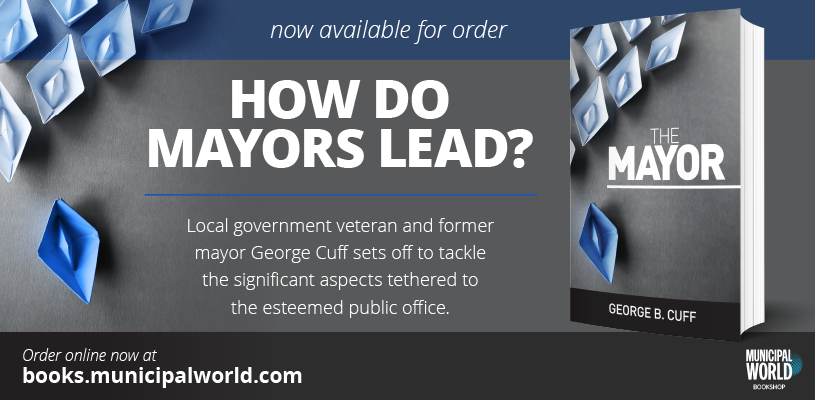The benefits of GPOs in public sector procurement
 Group purchasing organizations offer a powerful solution to the fiscal challenges municipalities face today by enabling public sector entities to leverage collective buying power, streamline procurement processes, and achieve significant cost savings. Photo: Kinetic GPO
Group purchasing organizations offer a powerful solution to the fiscal challenges municipalities face today by enabling public sector entities to leverage collective buying power, streamline procurement processes, and achieve significant cost savings. Photo: Kinetic GPO
In today’s complex public procurement environment, municipalities are under pressure to serve their communities effectively while maintaining fiscal responsibility. This often involves navigating tight budgets, lengthy procurement processes, and strict regulations that can hamper efficiency.
Group purchasing organizations (GPOs), a form of co-operative procurement, offer a powerful solution to these challenges by enabling public sector entities to leverage collective buying power, streamline procurement processes, and achieve significant cost savings.
Key Benefits of GPOs
In 2017, the Canadian Free Trade Agreement (CFTA) recognized the acceptability of using buying groups. Since then, there has been a continual upward trend of public sector entities leveraging co-operative contracts. This upward trajectory is largely due to the many benefits associated with GPOs.
LouAnn Birkett, Kinetic GPO senior supply chain advisor – contracting, based in Ontario, said, “As members recognize these benefits, the use of GPOs is increasing, and it will only continue to grow.”
Rozalyn Werner-Arcé, executive director of the Ontario Public Buyers Association (OPBA), whose mission is advancing public procurement through advocacy, connection, and professional growth, said her organization’s courses on co-operative procurement are in high demand.
“For public agencies that are not using co-operative purchasing, we encourage them to look at the options because there are many benefits,” Werner-Arcé said. “It’s well worth gaining a better understanding of co-operative purchasing because it could really help agencies save time and money.”
1. Cost savings
One of the most compelling reasons for public entities to use GPOs is the opportunity for substantial cost savings through economies of scale.
“By aggregating the purchasing power of multiple organizations, GPOs can negotiate lower prices than individual entities could achieve on their own. Suppliers are incentivized to offer deeper discounts due to the volume of business GPOs represent,” said Jean-Marc Nadeau, CEO of SUMA in Regina. “Whether a municipality is buying a fleet of vehicles or books for school libraries, the price will be less with the pooled purchasing power of a GPO.”
2. Time savings
Procurement professionals in public agencies often face the challenge of limited time and resources. Yet, Birkett said, developing a request for proposal (RFP) could take anywhere from 15 to 40 hours or more, depending on its size and complexity.
“Once submissions are received, members of the evaluation team can spend an hour or more evaluating each proposal. If the RFP generates five proposals, and the procurement team has three people who need to spend an hour evaluating each proposal, and then spend additional time for a consensus evaluation, the hours can add up quickly,” Birkett said. “That is a lot of resources just to get to the contract recommendation point, much less what is involved getting the procured goods or services to the public.”
To get a more specific look at the cost to procure, Pavilion and National Cooperative Procurement Partners created a free tool to help public sector buyers estimate the costs of running a new solicitation versus leveraging a co-operative contract. The tool estimates key salary costs associated with running a new solicitation.
In many cases, GPOs offer a significant time-saving advantage by streamlining the procurement process. When public entities join a GPO, they gain access to competitively solicited contracts, which eliminates the need for time-consuming bid preparation, evaluation, and negotiation. Since the GPO has already conducted the solicitation and awarded the contract, organizations can immediately access goods and services at the agreed-upon terms.
The Harvard White Paper, “Cooperative Procurement: Today’s Contracting Tool, Tomorrow’s Contracting Strategy,” points out that by consolidating demand through a GPO, acquisition officers can delegate routine work to nationally accepted practitioners, freeing up their time for more complex and pressing issues.
3. Access to high-quality products and services
Another significant benefit of GPOs is improved access to high-quality products and services. GPOs often work with trusted suppliers who meet rigorous standards and offer reliable products. Since the contracts negotiated by GPOs are typically the result of a competitive bidding process, public entities can be confident that they are obtaining high-quality goods and services at favourable terms.
4. Vendor management
GPOs often provide vendor management services, ensuring that suppliers adhere to contract terms, meet delivery schedules, and offer the expected level of service. “If there is an issue with the service or quality, the GPO can work with the vendor on a resolution, which saves the procurement team time,” Birkett said.
5. Compliance and best practices
GPOs ensure that all purchasing agreements meet applicable legislation including the Canadian Free Trade Agreement and the EU-Canada Comprehensive Economic and Trade Agreement (CETA), saving municipalities tremendous time and giving them the assurance that purchasing agreements align with best practices.
“At Kinetic, we make sure our documents not only meet those trade agreements, but they also exceed the trade agreements,” said Birkett, pointing to the current rule about debriefings as an example. “Many agencies wait for a vendor to request a debrief, but Kinetic actively promotes debriefs with all vendors, whether successful or not, to explain what they did well and what they could do better in the future.”
Nadeau said GPOs’ expertise in trade laws and compliance lowers risk for all parties. “GPOs follow very strict procurement processes, ensuring that they use proper procurement policies and respect trade agreements and legislative requirements. The procedure is transparent and based on Canadian law.”
Birkett said GPOs like Kinetic also incorporate best practices that may not be feasible on the local level, such as talking to vendors before sending out RFPs.
“We need to know what is available in the marketplace and that our proposal can be met,” Birkett said. “Without this step, municipalities would put out their own Request for Information, but that puts more work on vendors to reply to that request as well as the actual proposal.”
6. Risk mitigation
Supply chain disruptions, such as those caused by natural disasters or global events like the COVID-19 pandemic, can have a major impact on procurement activities. GPOs can reduce these risks by working with a network of reliable suppliers and having contingency plans in place.
During times of crisis, GPOs can quickly source critical items – like personal protective equipment (PPE) during the pandemic – from a broader range of suppliers, ensuring that member organizations continue to meet their needs without significant delays.
7. Social impact and sustainability
Public procurement often involves considerations beyond cost, such as sustainability, social equity, and diversity. GPOs are increasingly focused on promoting positive social change through their contracts. Public agencies can benefit from these efforts by accessing products and services from Indigenous-owned, minority-owned, women-owned, or veteran-owned businesses, helping them meet diversity goals set by government policies.
8. Enhanced collaboration and networking
Membership in a GPO also fosters collaboration and knowledge-sharing among public procurement professionals, Nadeau said. By participating in a GPO, organizations can connect with other entities facing similar challenges and share best practices, insights, and strategies. This sense of community can be particularly valuable for smaller entities that may lack a robust internal procurement network.
As public procurement leaders continue to seek ways to do more with fewer resources, the strategic use of GPOs is poised to play a crucial role in shaping the future of public procurement.
To learn more about co-operative purchasing, Werner-Arcé recommends visiting the OPBA site – www.opba.ca – for resources, webinars, and mentoring programs. MW
Chris Penny is the CEO of Kinetic GPO. Penny has spent two decades helping public-sector entities and suppliers manage the often-complicated world of public sector purchasing.



